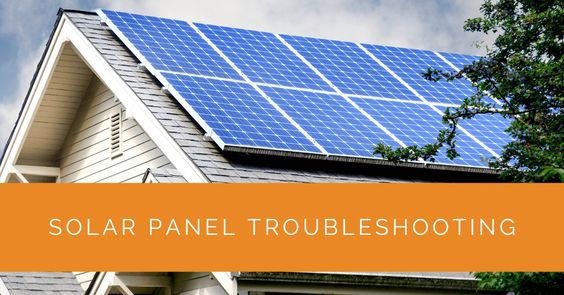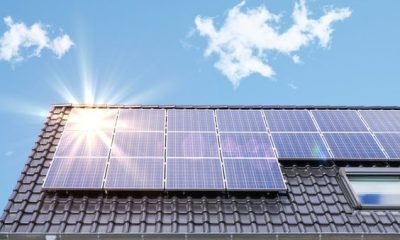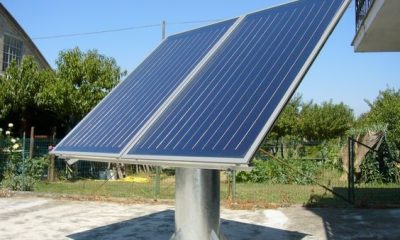Home Solar Energy
How To Troubleshoot Solar Panel Problems

How To Troubleshoot Solar Panel Problems
Understanding the Basics of Solar Panel Troubleshooting
Introduction
Solar panels have become an integral part of our quest for clean and sustainable energy. They are a cost-effective way to harness the power of the sun to generate electricity, reducing our carbon footprint and energy bills. However, like any technology, solar panels can encounter issues that may affect their performance. In this article, we will explore the common problems associated with solar panels and how to troubleshoot them effectively.
Importance of Solar Panels
Before diving into troubleshooting, it’s important to understand why solar panels are so crucial. Solar panels convert sunlight into electricity, providing a renewable and eco-friendly energy source. They reduce greenhouse gas emissions and dependence on fossil fuels, making them a key player in the fight against climate change. Additionally, they can significantly lower your electricity bills and offer a return on investment over time.
Common Issues with Solar Panels
To ensure your solar panels continue to function optimally, it’s vital to be aware of the most frequent problems that can arise:
1. Dust and Debris: Accumulated dirt and debris on the panel surface can block sunlight and reduce efficiency.
2. Shading: Even partial shading can significantly impact the energy production of a solar panel.
3. Wiring Issues: Loose, corroded, or damaged wires can disrupt the electrical flow within the system.
4. Inverter Problems: The inverter is essential for converting the DC power from the panels into AC power for use in your home. Malfunctions can have a cascading effect on the entire system.
5. Faulty Batteries (if applicable): If your system includes a battery backup, it can develop issues with time, affecting energy storage and availability.
6. Weather Damage: Extreme weather conditions, such as hail or heavy snow, can physically damage the panels.
Now that we’ve established why solar panels are important and the potential issues they can face, let’s move on to the first step in troubleshooting: Pre-Troubleshooting Preparation.
Pre-Troubleshooting Preparation
Before you begin the troubleshooting process, it’s crucial to take some preparatory steps to ensure your safety and the effectiveness of your efforts:
A. Safety Precautions
- Always turn off the solar panel system before attempting any troubleshooting. This prevents electrical shock and potential accidents.
- Use personal protective equipment (PPE) such as gloves and safety glasses to avoid injury.
- Be cautious when working at heights if your panels are installed on the roof.
B. Gather Necessary Tools
- A multimeter for electrical testing.
- A soft brush for cleaning panels.
- A ladder and safety harness for accessing roof-mounted panels.
- A notepad and pen for documenting findings.
- Your solar panel system’s documentation, including user manuals and installation guides.
C. Review System Documentation
- Familiarize yourself with your solar panel system’s documentation. This includes information about your specific components, maintenance recommendations, and troubleshooting tips provided by the manufacturer or installer.
By taking these preparatory steps, you’ll ensure a safer and more effective troubleshooting process for your solar panel system. In the next sections, we’ll delve into the detailed steps for visually inspecting your solar panels, electrical testing, monitoring system performance, and much more. Stay tuned for more insightful tips on keeping your solar panel system running at its best.
In the following sections of this article, we will continue to explore the steps involved in troubleshooting solar panel problems. This knowledge will empower you to address common issues and keep your solar panel system performing at its peak. Let’s dive into the next steps.
Visual Inspection
A. Check for Physical Damage
- Inspect the solar panels for visible physical damage such as cracks, chips, or discoloration.
- Look for signs of wear and tear, like loose or missing screws in the mounting system.
- Ensure that the glass surface is clean and free from debris.
B. Examine Connections and Wiring
- Inspect all electrical connections for loose or disconnected wires.
- Check for any signs of corrosion or damage in the wires.
- Verify that connectors are properly seated and securely fastened.
Electrical Testing
A. Use a Multimeter
- Invest in a reliable multimeter to measure voltage, current, and resistance.
- Follow safety precautions and manufacturer guidelines for using the multimeter.
B. Test Voltage and Current
- Measure the voltage output of each solar panel individually to ensure they are producing electricity.
- Test the current flow to detect any issues with the overall circuit.
C. Check for Circuit Continuity
- Use the multimeter to test for continuity in the circuit.
- Ensure there are no open or broken circuits that could disrupt the flow of electricity.
Troubleshoot Solar Panel Problems
Monitoring System Performance
A. Analyze Output Data
- Access your solar panel system’s monitoring software, if available, to view historical data on energy production.
- Look for irregularities or dips in energy output.
B. Compare with Expected Performance
- Understand the expected energy production based on factors like panel capacity, sunlight hours, and weather conditions.
- Compare the actual output with the expected output to identify any discrepancies.
By conducting a visual inspection and performing electrical tests, you can identify and potentially resolve issues related to the physical condition and electrical connectivity of your solar panel system.
In the subsequent sections of this article, we will cover further steps, including inverter inspection, shade analysis, evaluating battery systems (if applicable), and when to seek professional assistance. These steps will help you gain a comprehensive understanding of solar panel troubleshooting and enable you to maintain your system effectively. Stay tuned for more valuable insights.
Inverter Inspection
A. Check Inverter Status
- The inverter is a critical component that converts DC power generated by the solar panels into usable AC power for your home.
- Monitor the inverter display for error messages, warnings, or unusual readings. These can provide valuable clues about the health of your system.
B. Monitor Error Codes
- If the inverter has an error code display, refer to the user manual or manufacturer’s documentation to interpret the codes.
- Error codes can pinpoint issues within the inverter or the solar panel system.
Shade Analysis
A. Assess Shading Issues
- Shade on even a small portion of a solar panel can significantly impact energy production.
- Identify any objects, trees, or structures that cast shadows on your panels throughout the day.
B. Determine If Adjustments Are Needed
- Consider trimming or removing objects that cause shading.
- If shading is unavoidable, explore the use of micro-inverters or optimizers that can mitigate the effects of shading.
Battery System Evaluation (If Applicable)
A. Test Battery Performance
- If your solar panel system includes a battery backup, assess the battery’s performance.
- Check for signs of degradation, capacity loss, or irregular charging and discharging patterns.
B. Verify Charging and Discharging
- Ensure the battery charges and discharges as expected during different times of the day.
- Look for any signs of overcharging or undercharging, which can affect battery life.
Professional Assistance
A. Contact Manufacturer or Installer
- If you’ve exhausted your troubleshooting efforts and cannot identify or resolve the issue, contact the manufacturer or installer of your solar panel system.
- They can provide expert guidance and potentially schedule a service visit.
B. Seek Help from a Solar Technician
- Consider enlisting the services of a certified solar technician for a thorough inspection and repair.
- Professionals have the knowledge and equipment to diagnose and fix complex issues.
In conclusion, understanding the process of troubleshooting solar panel problems is essential for maintaining the performance of your renewable energy system. By following the steps outlined in this article, you can identify and resolve many common issues that may arise. Remember to prioritize safety, regularly inspect and maintain your solar panels, and seek professional help when needed to ensure your system continues to harness clean, sustainable energy effectively.
Conclusion
In this comprehensive guide, we’ve explored the essential steps to troubleshoot solar panel problems effectively. Solar panels are a fantastic investment in clean, renewable energy, but like any technology, they can encounter issues that affect their performance. Understanding how to troubleshoot these issues can save you time, money, and energy in the long run.
To summarize:
1. Importance of Solar Panels: We’ve highlighted the significance of solar panels in reducing greenhouse gas emissions, lowering energy bills, and promoting sustainability.
2. Common Issues with Solar Panels: We’ve identified common problems, from dirt and debris on panel surfaces to inverter malfunctions and shading issues.
3. Pre-Troubleshooting Preparation: We discussed the importance of safety precautions, gathering necessary tools, and reviewing system documentation before beginning troubleshooting.
4. Visual Inspection: We covered how to visually inspect your panels for physical damage and assess the condition of connections and wiring.
5. Electrical Testing: We explained the use of a multimeter and how to test voltage, current, and circuit continuity.
6. Monitoring System Performance: We emphasized the significance of monitoring your system’s performance data and comparing it with expected results.
7. Inverter Inspection: We discussed checking the inverter status and interpreting error codes.
8. Shade Analysis: We looked at how shading can affect solar panel performance and what adjustments can be made.
9. Battery System Evaluation (If Applicable): We explored how to evaluate the performance and health of battery systems if your setup includes them.
10. Professional Assistance: We discussed when to contact the manufacturer, installer, or solar technician for expert help.
By following these steps, you can troubleshoot many common solar panel problems and ensure your solar panel system continues to deliver the benefits of clean, renewable energy. Regular maintenance and periodic checks will go a long way in maximizing your system’s efficiency and longevity.
Thank you for reading this article, and we hope it empowers you to maintain your solar panel system effectively and contribute to a more sustainable future.


















